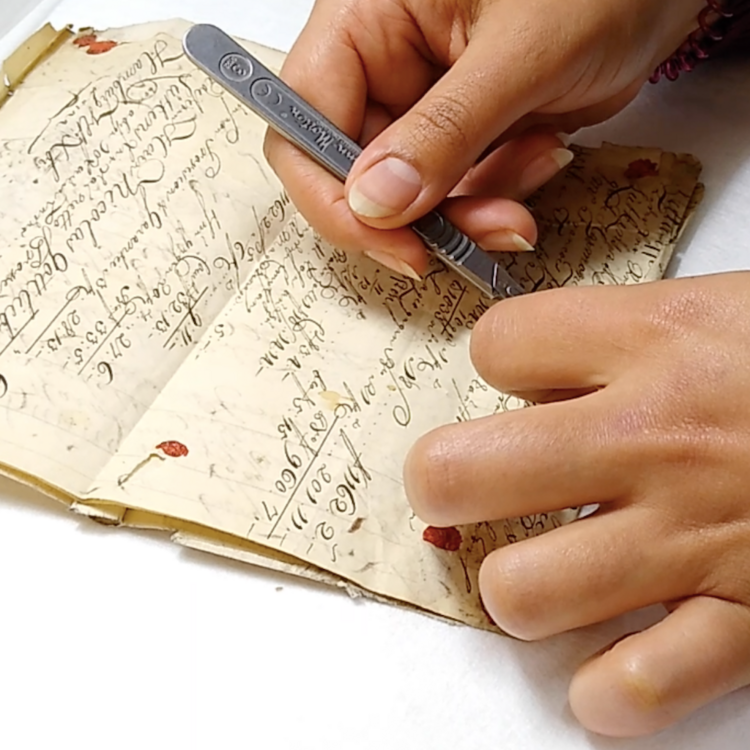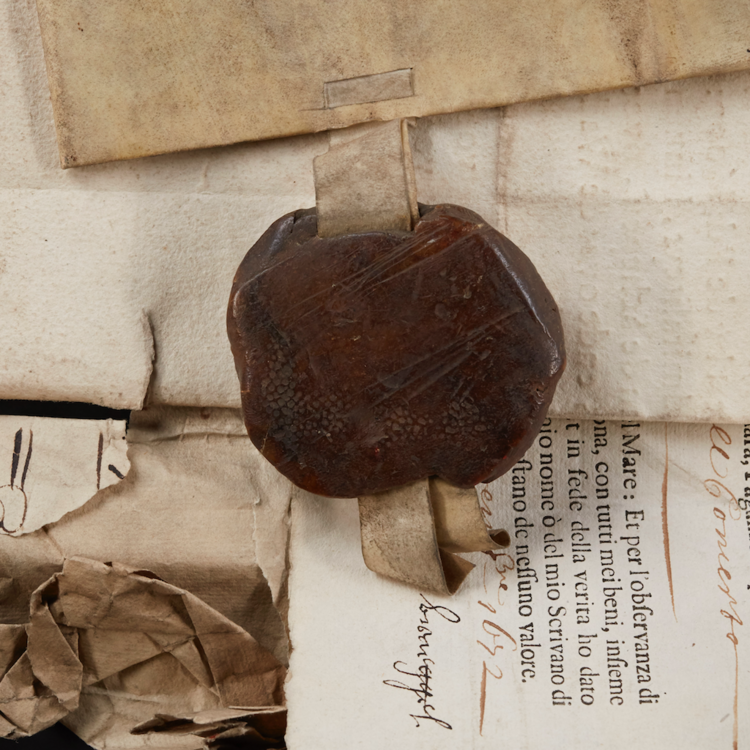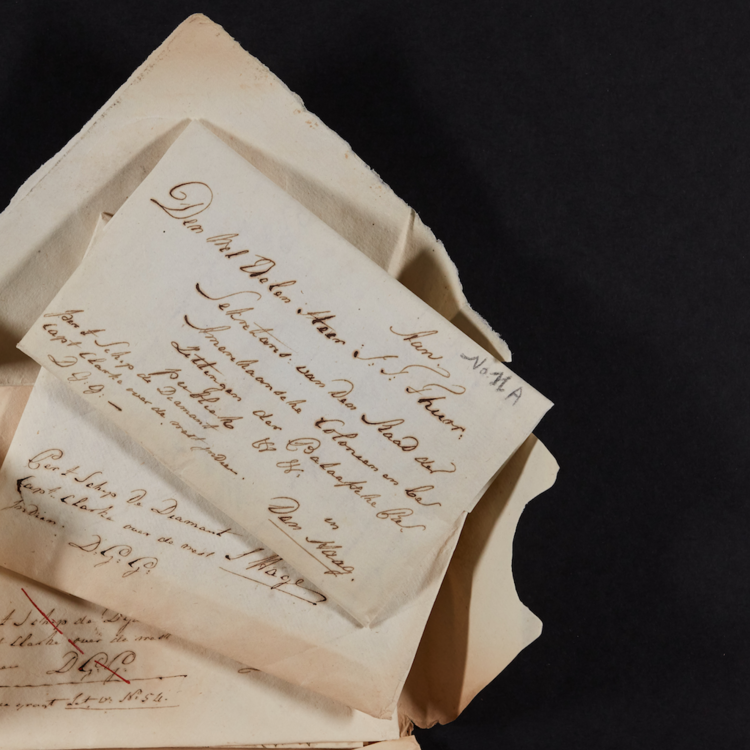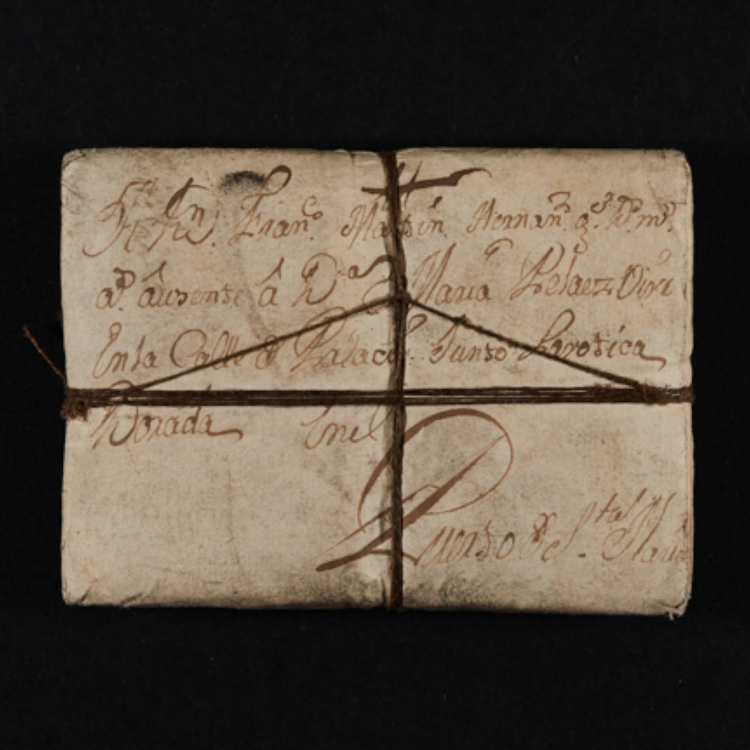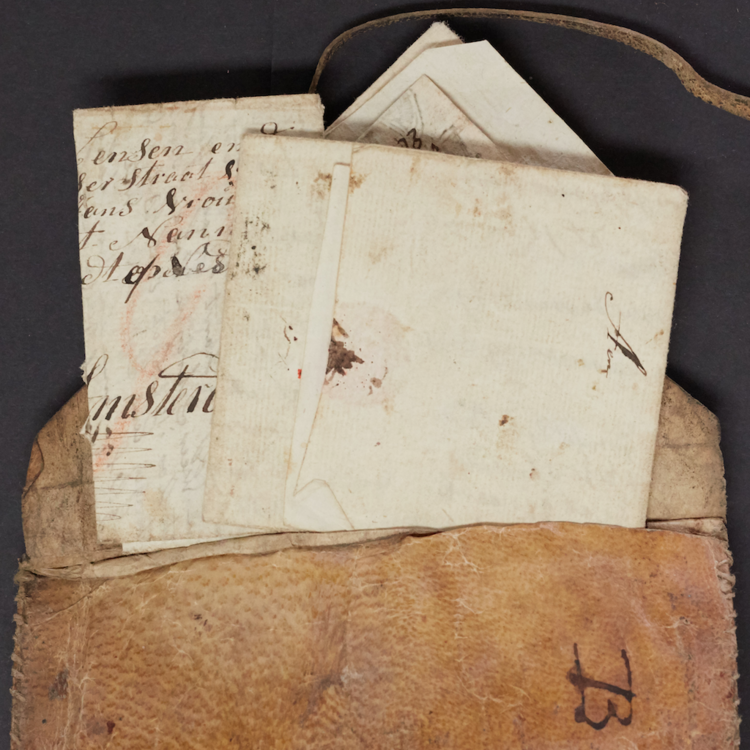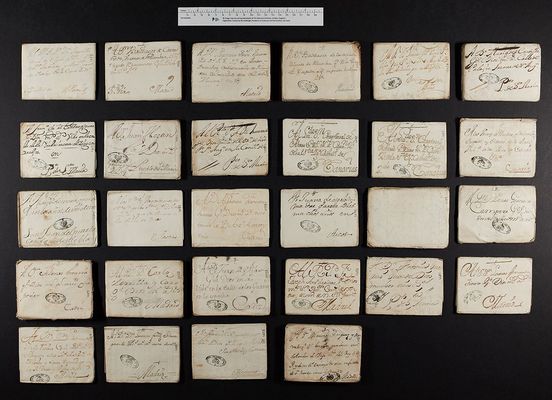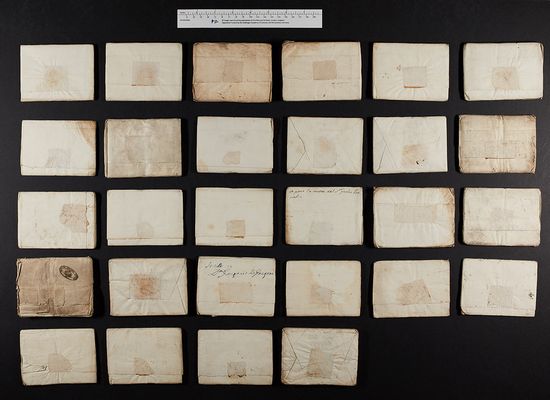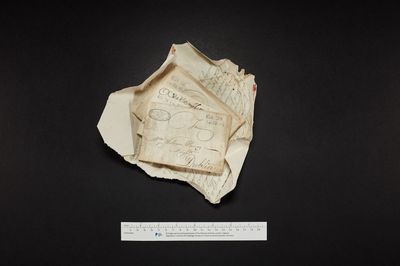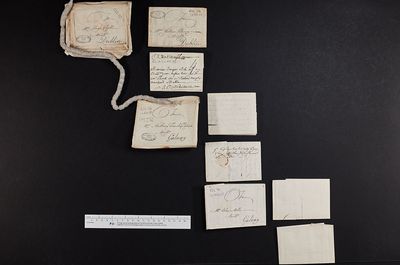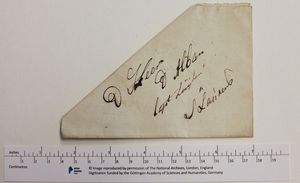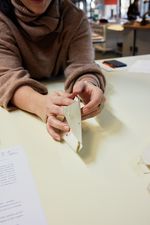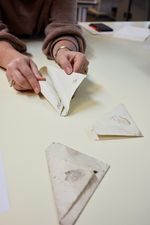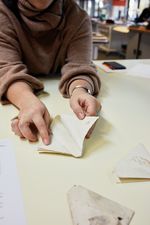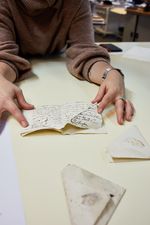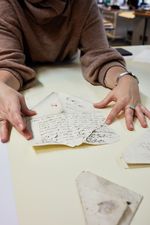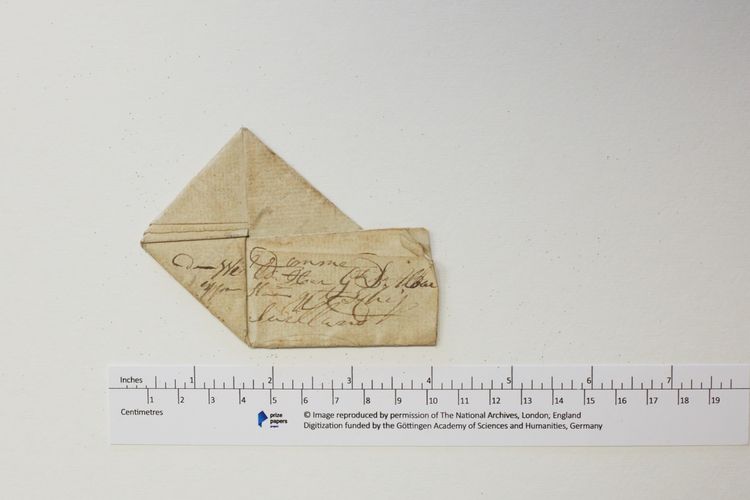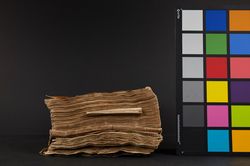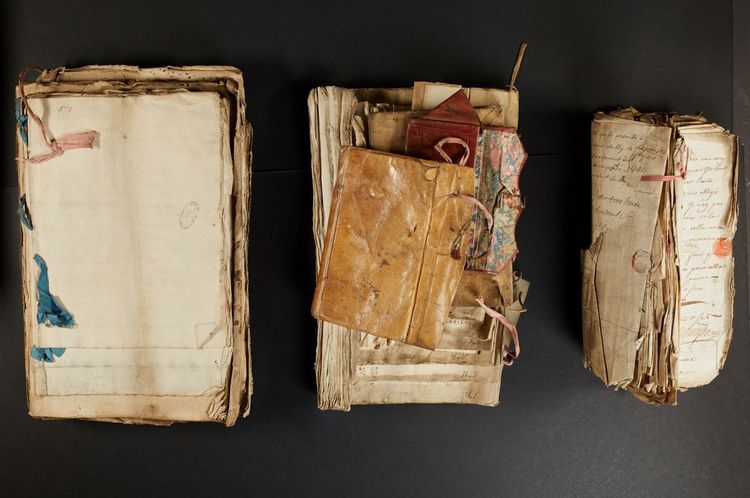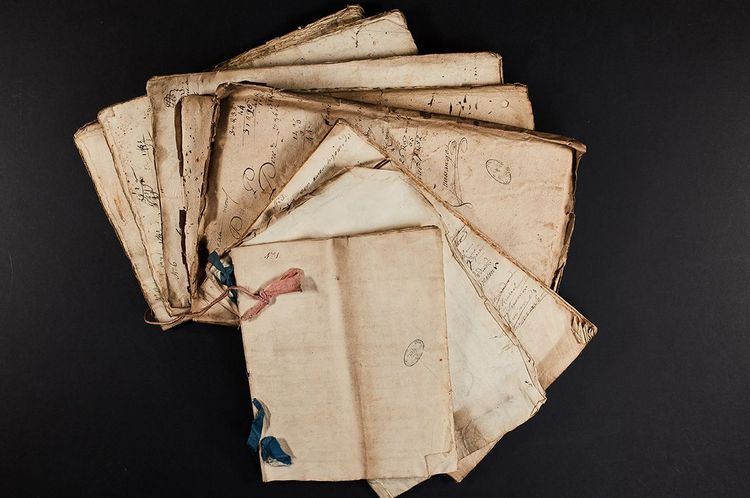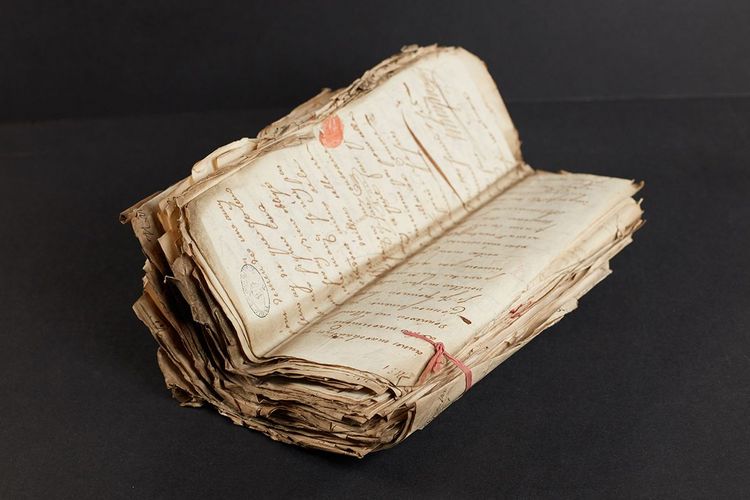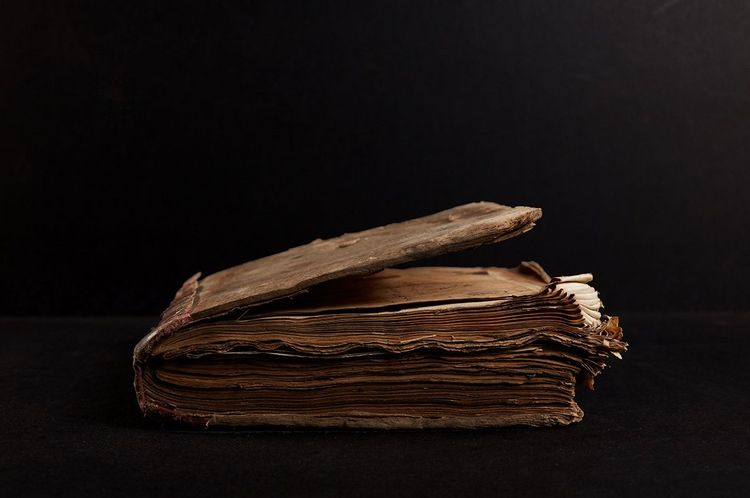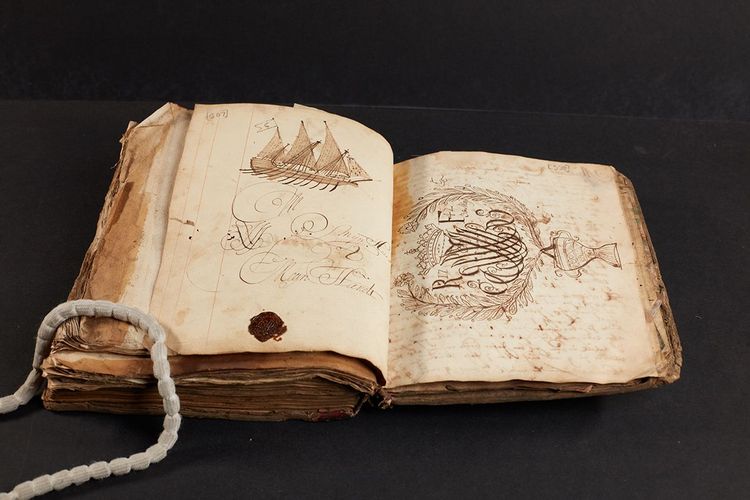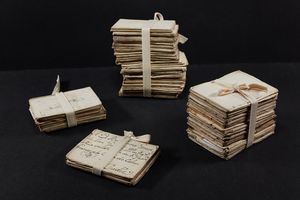Practices
Practices
Learn more about historical practices that have left their mark on the collection. Due to the intriguing state of preservation of the Prize Papers collection, many past handling techniques of paper or other artifacts have left a trace or perpetuated themselves in the material so that researchers today can draw conclusions on the material competence of historical actors, literacy skills, postal conditions, administrative and court practices, letter practices or archive practices, then and now.
Postal Practices
Letter formats
The Prize Papers collection comprises more than 160 000 letters. In the pictures, we can see parts of the mail in transit, mostly Spanish letters, that were stored in mailbags on the French ship Le Fort de Nantes before it was captured in January 1747. The letters all show the same format and size although sent by different actors and to different locations. The letters also reveal similar sealing methods of imprinted seals, albeit using different adhesives. This letter size, format, and seal was typical for letters sent from or to Spain or the Spanish overseas territories and typical for the Bourbon postal system. Another typical feature for Spanish letters and its (overseas) postal system are the long address lines.TNA, HCA 32/111E
Learn more about these letters and their writers here.
Letter Practices
Due to the fact that thousands of letters of the Prize Papers collection have survived in their original folded state or even as still unopened letters, and since the Prize Papers Project preserves this unique conservation status, researchers today and in the future will be able to work with and to examine original early modern letter packages. It was common practice during the entire period that letters were sent together in packages whereas, since envelopes were not yet in use, the outer letter most often served as a letter wrapper for the enclosed ones. In the picture, we can see a letter package coming from an original postbag stored among the cargo of the ship Two Sisters of Dublin. The outer letter enclosed several other letters, which again enclosed letters in turn. The different writers have, furthermore, used different letter folding and locking techniques. In order to document the original material arrangements of such letter packages, the Prize Papers Project has developed the imaging format and set-up of panorama shots to document the original material arrangements of these letter packages, which we can see on the second picture. In TNA sorting, the material arrangements of letter packages are also respected and represented through the usage of hierarchical reference numbers referring to the different layers of letter packages. On the basis of material arrangements, researchers will be able to examine and learn about official and unofficial postal routes and communication channels, practices of hand-to-hand delivery, about levels of secrecy, trust or familiarity, or more generally about relationships and networks. TNA, HCA 32/249/11
See a corresponding documentary materiality video of this letter package:
Letter folding and letter locking techniques
Letter writers during the early modern period used various forms of folding letter paper and locking techniques preparing their letters for postal despatch. During an age when envelopes were not yet invented in its present form, people used the letter paper itself to create dispatchable postal items. As pioneer research performed by our colleagues from Letterlocking.org has convincingly shown, the people of the age found impressively innovative ways and means, various material techniques to fold paper and adhere different materials to their letters in order to lock it and secure it from prying eyes.
In the Prize Papers collection, due to the fact that thousands of letters have survived in their original folded condition, also hundreds of different forms, formats, folds and letter locks used for early modern letters have survived. In the project, we preserve these historical folding and locking techniques and document them in pictures, as materiality shots or videos, as well as in text as part of the materiality reports and in metadata.
The reasons why people used certain letter folding techniques or locks or preferred some techniques over others, or used different techniques for different occasions, is currently one of the burning questions in research on early modern letters. With the research conducted in the Prize Papers Project and our focus on materiality, we are actively participating in this ongoing discussion, not least because the Prize Papers collection offers quantitative material in this regard. First results indicate that folds, formats, and locks could have symbolic meaning, like in the case of invitation letters from freemasons found in the collection; some techniques were chosen for practical purposes, as in all cases letters needed to enclose other letters or inserted artefacts; some reacted to postal conditions or were the result of personal affinities, regional traditions, or professional requirements, as in the case of merchants, whose complete letter archives are to be found in the collection.
Learn more about the work of our cooperation partners from letterlocking.org.
TNA, HCA 30/759:
Most intriguing letter formats and letter folding techniques were found on the Danish ship Scielland
In the picture, we can see a letter folded and locked in a hexagon shape.
Find these letters here.
Administrative and court practices
Bound volumes of court papers
Books have a materiality of their own. One very typical material feature of the books we encounter in the Prize Papers collection is finding large volumes of neatly bundled and bound together court papers. In the pictures we can see a large bound volume of court records in the fascinating case of the ship Santa Catherina, a French merchant ship leased to Armenian merchants from New Julfa. Tying up court records by means of threading strings through court papers and pieces of evidence was an archival practice that was performed over centuries, not just limited to the early modern period. TNA, HCA 42/25
· Learn more about the ship, its history and the records in this case here.
· Learn more about research in these letters in Sebouh Aslanian’s groundbreaking book From the Indian Ocean to the Mediterranean: The Global Trade Networks of Armenian Merchants from New Julfa. Berkley: University of California Press, 2011.
Court bundles
A typical contemporary record keeping practice of the High Court of Admiralty was to bundle together pieces of evidence taken from captured ships. In order to document the original material arrangements of these court bundles, which are still intact today, the Prize Papers imaging operators take materiality shots of the original bundles. Furthermore, the Prize Papers sorting team pays especial attention to these material arrangements via in-depth cataloguing. On the pictures, we can see original court bundles regarding the case of the French ship L’Ocean bound from Bayonne to Cartagena de Indias or Martinique. These bundles include inter alia French church registers, account books, sets of navigation exercises from on board, a leather wallet, 'Memoires d'un voyage de L'Amerique', collections of songs in French, and a bundle of letters addressed to members of the crew – all showing the great variety of document types in the collection. The different colours of the ribbons used in some instances indicate different kinds of documents used before court or in different stages of the hearing of evidence. TNA, HCA 32/140
· Learn more about these court bundles here.
· See more of these intriguing court bundles here.
Bound volumes of ship’s journals
Books have their very own kind of materiality. One very typical material practice and feature of early modern books that we encounter in the Prize Papers collection is books that actually consist of several individual booklets or journals which were first used individually and later bound together into large and heavy bound volumes, often in leather covers. In the pictures we can see a large bound volume of several ships’s journals that were kept by ship’s captain Rieweert Frerecks during his voyages in the years 1733-1745. Frerecks’ book was found among his personal papers on board the Hamburg ship Die Hoffnung. In the book, we also find various illustrations and drawings by Frerecks, of Turkish galleys, ships with different rigs, or calligraphic designs. TNA, HCA 30/660
· For more information see HCA 30/660
· For more information on the ship "Hoffnung" and its precious cargo see the upcoming book by Lucas Haasis, The Power of Persuasion. Becoming a merchant in the 18th century. Bielefeld, 2021.
Archival practices
Conservation bundles
In December 1746, the French vessel Le Fort de Nantes or El Fuerte was taken in fight by English ships of war in the waters off Madeira. A “great number of papers” were thrown overboard before capture, however, several mailbags stored in the hold of the ship were still confiscated by the British soldiers. These mailbags, containing 319 letters, remained in London. The content of such mailbags most often follows no logic of its own apart from the fact that the bags encloses all the letters. Only TNA sorting and conservation can bring order into this chaos today. In the picture we can see bundles of letters tied up by TNA Conservation Care. The letter were assigned a pre-sorting reference number, given by the conservation team. These bundles are created depending on which conservation procedure will be required to open the different types of seals and letter locks. The variety of seals and closing procedures of these letters is intriguing and challenging at the same time. Only after the careful opening procedure of these precious artefacts will the letters receive their final reference number from the sorting team, who will sort the letters, e.g., by name or place, depending on their examination of the letters. At this point in time, however, the Prize Papers Project has already captured the original material condition and arrangements of these letters in Before Treatment Shots. TNA, HCA 32/111E
Learn more about these letters here.


